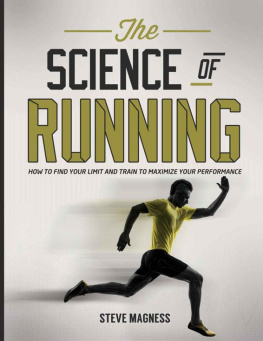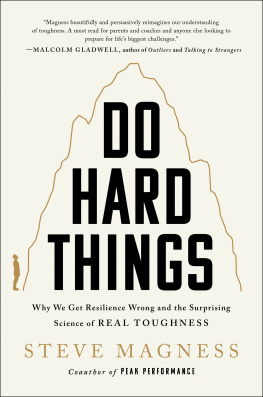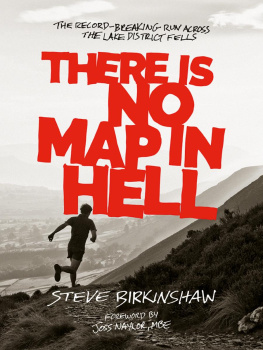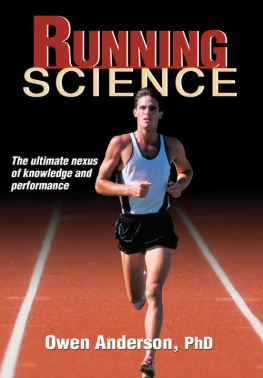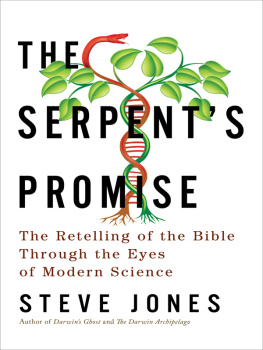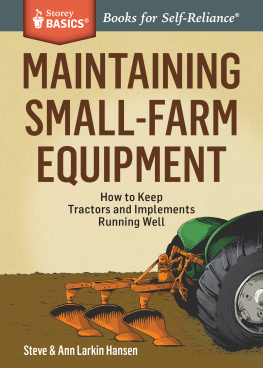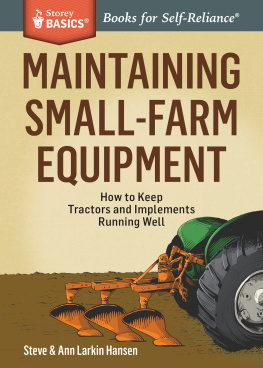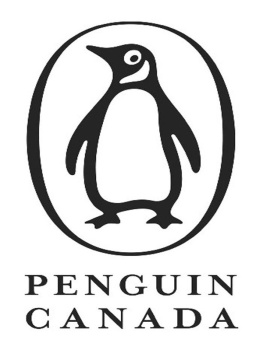Steve Magness - The Science of Running
Here you can read online Steve Magness - The Science of Running full text of the book (entire story) in english for free. Download pdf and epub, get meaning, cover and reviews about this ebook. year: 2014, publisher: Origin Running Press, genre: Romance novel. Description of the work, (preface) as well as reviews are available. Best literature library LitArk.com created for fans of good reading and offers a wide selection of genres:
Romance novel
Science fiction
Adventure
Detective
Science
History
Home and family
Prose
Art
Politics
Computer
Non-fiction
Religion
Business
Children
Humor
Choose a favorite category and find really read worthwhile books. Enjoy immersion in the world of imagination, feel the emotions of the characters or learn something new for yourself, make an fascinating discovery.
- Book:The Science of Running
- Author:
- Publisher:Origin Running Press
- Genre:
- Year:2014
- Rating:4 / 5
- Favourites:Add to favourites
- Your mark:
- 80
- 1
- 2
- 3
- 4
- 5
The Science of Running: summary, description and annotation
We offer to read an annotation, description, summary or preface (depends on what the author of the book "The Science of Running" wrote himself). If you haven't found the necessary information about the book — write in the comments, we will try to find it.
The Science of Running — read online for free the complete book (whole text) full work
Below is the text of the book, divided by pages. System saving the place of the last page read, allows you to conveniently read the book "The Science of Running" online for free, without having to search again every time where you left off. Put a bookmark, and you can go to the page where you finished reading at any time.
Font size:
Interval:
Bookmark:
TheScience of Running
How to find your limit and train to maximize your performance
http://www.ScienceofRunning.com
Copyright 2014 by Stephen Magness
All rights reserved. This book or any portion thereof maynot be reproduced or used in any manner whatsoever without the express writtenpermission of the publisher except for the use of brief quotations in a bookreview or scholarly journal.
First Printing: February 2014
ISBN 978-0-615-94294-0
Origin Publishing
www.ScienceofRunning.com
Cover design by Mike Sayneko
www.SayenkoDesign.com
ToGerald Stewart, Tom Tellez,
Andmy family, Bill, Elizabeth, Phillip, and Emily
MotorProgramming
MuscleContraction
Energetics
MuscleFiber Types
ARecruitment Issue
PassiveMechanics
HowFatigue manifests itself
HowFatigue occurs
Oxygensrole
ViolatingHomeostasis
PlayingMad Scientist
Neurophysiology
TheRole of Feedback
Perceptionof Effort
Themeasurement: VO2max
Oxygenintake, transportation, and utilization
TheVO2max limiter
Howthe VO2max concept developed
Efficacyof basing training paces off of VO2max
Shouldwe train to improve VO2max?
Buffering/Dealingwith high acidosis
TheLactate Threshold
LactateTesting
TheMeasurement: Running Economy
BiomechanicalEfficiency
NeuromuscularEfficiency
MetabolicEfficiency
Problemswith Running Economy
Neuromuscularand Anaerobic factors in performance
Fatigueand the CNS
TemperatureRegulation
ThePsychology of it all
Steps of Adaptation
LongTerm Adaptation
TrainingApplications
GeneralAdaptation Syndrome and Dose-Response
Individualityof adaptation
Volume and Intensity of Training
Interactionof Volume and Intensity of Training
Trainingin the Real World
TrainingFrequency
Periodizationin Endurance Sport
Individualization
Knowing the Adaptation
Amplifiersand Dampeners of Adaptation
BalancingAct
TheGoal of Training
Models of Fatigue
Generalto Specific: A classification system
Adifferent kind of Base: Training intensity interaction
Periodization
Steps for workout design
Choosingthe right direction
The Slow Twitch vs. Fast Twitch model
Howfiber type impacts each training workout
Findingyour fiber type the easy way
Mileage, Distance runs, and Recovery runs
LongRuns, Tempo, and Threshold Running
Sprints,Interval, and Repeat Workouts
SpecificEndurance Development
The big picture- Periodization within a Career
WithinSeason Periodization
Withindays/weeks Periodization
Peaking
Finalizingthe Plan
800m
1500m/1mile
5,000m
10,000m
Marathon
Strength Endurance-The Key to kick development
Creatinga MaxLASS at Race Pace
StrengthTraining for the endurance athlete
Appendix: Workout examplesand progressions for each workout type
References
AboutThe Author
Theserious, committed runner is neglected. There are very few books, magazines, oreven advertisements aimed at the runner looking to maximize performance. Instead,the running industry has focused on the recreational runner. The endless supplyof articles explaining how to run your first marathon or how to run your best5k on 3 runs per week dominates the magazine articles and the bookshelves. Wewere all beginners at some time, so it is no knock on those who need suchinformation to get started. However, as we get further and further from therecreational runner, the resources become increasingly sparse.
Forthe highly competitive, elite, college, or serious runner looking to maximizeperformance, the options are few and far between. Unless you are lucky enoughto call some elite runners or high-level coaches friends, the information onhow top runners train is limited. My aim is to blow the doors wide open andprovide the details that Ive accumulated through running myself, coachinghigh-level runners, working with great coaches and studying practically everyelite coach in running history. My hope is that the information on trainingprovided will not only help you maximize your or your athletes runningperformance but also lead to better and more innovative training practices. Wehave a long way to go until the training process is figured out, and hopefully,this book serves as not a final destination but as a stepping-stone andcatalyst for future improvements in training.
The firstsection focuses on the details on the science of running. This section had itsorigins as an in-depth literature review for my Masters thesis, but due to outsidecircumstances, I could not use it. Instead of letting it go to waste, it servedas the foundation of the Science section of the book. Similar to the trainingsection, I felt that the running physiology that was available in the massmedia was dumbed down. I set out to look at everything we knew about thescience of running and offer a critical review of that information. Mostrunning science books take an explanatory approach. Instead, my goal was to tryand answer the question what limits running performance?
Despitemy background in sports science, this section was not written from ascientists point of view. Instead, I wanted to look at the science from adifferent perspective, that of a high-level athlete and successful coach. Thisallowed me the unique opportunity to analyze everything as a member of twoopposing groups, a coach, and a sports scientist. What caught my attention wasthe level of disagreement between the two groups and the degree in which theyworked seemingly oblivious to the other group. There are exceptions of course,but it blew my mind that I would read paper after paper about the benefits oflow mileage/high-intensity training and how the Kenyans success was based onthis system, while at the same time coaches were espousing the completeopposite and having phenomenal success with that approach. The two groups,real-world application vs. laboratory science, seem to work independently ofeach other without either group acknowledging the others work.
Myhope is that this book will serve to bridge the gap. The coaches will get in-depthscientific knowledge and a new training paradigm for distance running, whilethe sports scientists will get a look at what actually works with runners inthe real world. I hope that you find this informative, useful, and above all,thought-provoking.
-SteveMagness
www.ScienceofRunning.com
Thisis not your typical watered-down mass-market training book that relies oncookie-cutter programs. There will be no formulaic training regimes or easy tofollow training plans included. Instead, this book is designed to challenge theathlete, coach, or scientist. It is designed for those looking to not solelyget better, but instead to maximize their performance. That doesnt mean it is onlyfor the elite, quite the contrary: it is for those of you who, like me, werefrustrated with the redundant information given out in every coaching andtraining book. My hope is that this book will provide new insight and directionin the world of running, and make the reader think critically about all of thetraditional notions held in coaching, running, and science.
Inthe world of running, the science and the practical side are at war. Researchscientists constantly lampoon the coaches for their lack of reliance on thetraining methods proven in their research studies to improve performance, whilecoaches ridicule the scientists for having no idea how the body works in thereal world and laugh at their training ideas. Read enough from both sides andyoull see how far apart they are. Whether its training volume, intensity,frequency of runs or even peaking strategies, the sides are so far apart on avariety of key issues that it is laughable. Most coaches and scientists give upon trying to understand the other side and instead delve deep into their own beliefswhile simply ignoring what the other side is doing. Both sides go about theirdays seemingly oblivious to the others work, so what we end up with is twocompletely contrasting theories on all things running.
Font size:
Interval:
Bookmark:
Similar books «The Science of Running»
Look at similar books to The Science of Running. We have selected literature similar in name and meaning in the hope of providing readers with more options to find new, interesting, not yet read works.
Discussion, reviews of the book The Science of Running and just readers' own opinions. Leave your comments, write what you think about the work, its meaning or the main characters. Specify what exactly you liked and what you didn't like, and why you think so.

